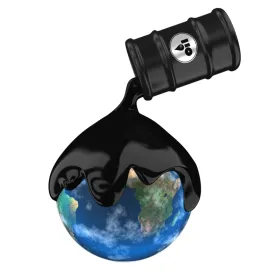The first commercial shipment of liquefied natural gas (LNG) left Cheniere Energy’s newly constructed export terminal in Sabine Pass, LA at a time when natural gas prices are expected to remain low and NGO’s seek to block future exports through climate change challenges. According to a recent article, Cheniere closed on a $5.9 billion financing package in May 2013 to fund the second stage of the massive natural gas liquefaction and transportation project. “Cheniere Closes $5.9B Financing for Sabine Pass LNG Project” (Law360 May 29, 2013). The company bet big that the project would be financially viable in the long run. Cheniere ’s interim CEO, Neal Shear, explained to CNBC during its Power Lunch segment on February 24, 2016 that the company has secured contracts for 87 percent of its LNG export terminals and is continuing construction of additional terminals along the Gulf Coast due to their “20 year view” that there will be demand for LNG in 2020 and beyond.
Meanwhile, Dominion Resources is moving forward with construction of its $3.8 billion Cove Point LNG export facility located in Calvert County, MD despite challenges by the Sierra Club, Patuxent Riverkeepers and Chesapeake Climate Action Network to the conditional approval granted by the Federal Energy Regulatory Commission (FERC) in September 2014. After FERC declined to grant the NGOs request that FERC grant re-hearing and withdraw its approval, the NGOs filed suit in the D.C. Circuit on May 7, 2015. The NGOs argue that FERC violated the National Environmental Policy Act (NEPA) by failing to consider that exporting LNG would result in increased greenhouse gas emissions and other adverse climate impacts from increased shale drilling. On February 25, 2016, FERC filed its Brief, explaining:
NEPA does not require the Commission to consider all potential impacts no matter how attenuated or speculative. Future natural gas development production activities, in the Commission’s informed judgment, are not a causally-related effect of the construction and operation of this particular liquefaction facility. Moreover, the impacts of any such production activities are not reasonably foreseeable – certainly not from the handful of press releases and news articles EarthReports cites. Thus, the Commission reasonably declined to further discuss indirect, speculative impacts that would not meaningfully inform its environmental review of the Liquefaction Project.
EarthReports, Inc. (DBA Patuxent Riverkeepers), Sierra Club, and Chesapeake Climate Action Network v. FERC, Dominion Cove Point LNG, LP, and American Petroleum Institute, Nos. 15-1127 & 15-1205 at p. 27 (D.C. Circuit 2016). The court is expected to hear oral arguments on April 19.
For Dominion, the stakes are high as revealed on its website:
The Case for Cove Point Export
Thousands of jobs. Millions in tax revenue. Continued community partnership and environmental conservation. The case for the Cove Point export project is clear. The benefits both economically and environmentally are real. For nearly 40 years, the Cove Point LNG terminal has taken great pride in being a valued member of the Maryland community and a responsible environmental steward. Commitment to the environment has remained a priority through a conservation management plan which ensures that nearly 90 percent of the site remains pristine and protected.
It is not clear if the court will issue a decision before the November presidential election or the appointment of a new U.S. Supreme Court Justice to replace the late Justice Antonin Scalia. However, it is certain that the decision will result in potentially significant economic and regulatory ramifications to the natural gas industry and be the subject of heated debate.



 />i
/>i
